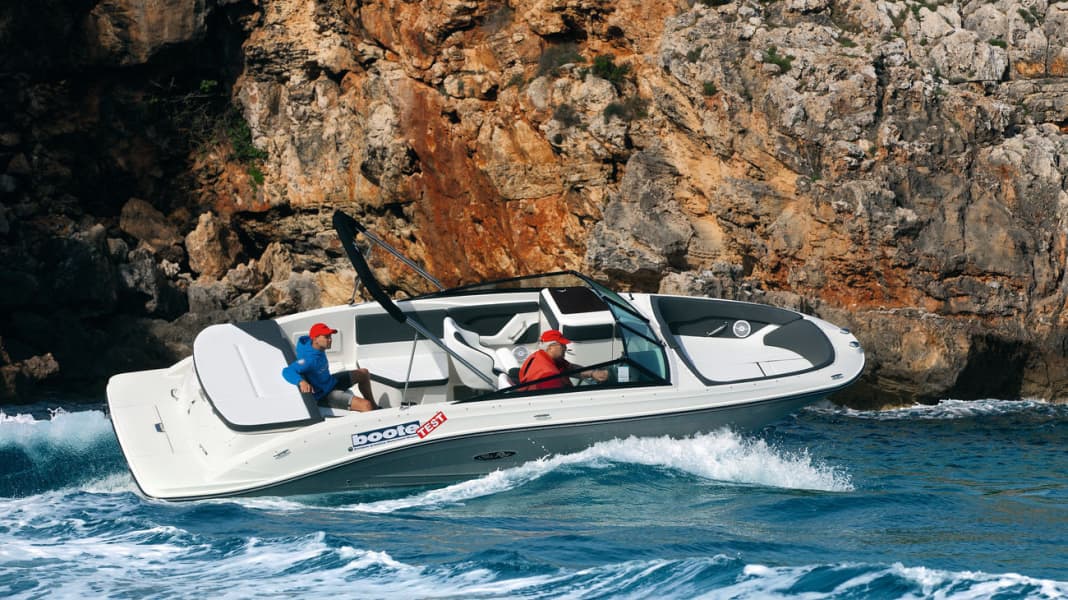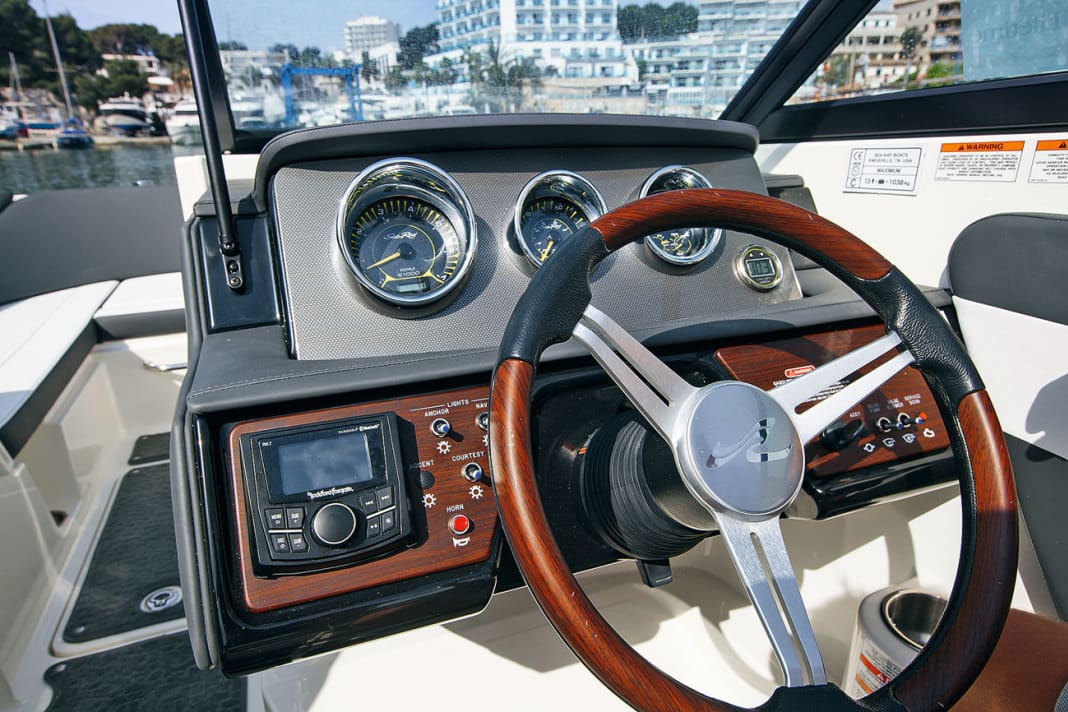
A few months ago, in the April issue of this year, we presented the SPX 210 mid-range version,now we ride the largest, the SPX 230 - but not on the Main, but on the Mediterranean off Porto Christo (Mallorca).
Their weight according to the brochure: around 1.9 tonnes. Depending on the trailer, this requires towing vehicles with a towing capacity of at least 2.5 tonnes. For those who prefer it a size smaller - there is also the SPX 190.
In terms of overall workmanship, the 230 is in no way inferior to the smaller 210. The plastic inside and outcan be seenthe cut edges are predominantly rounded and sealed, and theDouble-shell construction in some areas plus protective coating inside.






Thanks to edge protection at important points, we rate technical and electrical installations as good.There is a deduction for the installation of the fuse block under the dashboard because it is difficult to reach. The locking mechanism of the engine compartment lid, which is also a sunbed, initially refused to work, but this was resolved by the mechanics.
Like the SPX 210, our test boat is a bowrider and is equipped with additional seating in the bow. According to certification (CE category C), there is enough space for 13 people, provided they do not weigh more than 1038 kg including the payload.
And an important sticker on the bathing platform warns that it should not be loaded with more than about 180 kg.
The fact that the weather can throw a spanner in the works is part of everyday testing - even on Mallorca. Ideal the day before, then waves and rough water the next morning, preventing us from taking measurements. What we lacked back then when testing the SPX 210 is too much here - that's why we fall back on the measured values from the shipyard.
We sail with the standard motorisation, a MerCruiser 4.5L, which puts its 250 hp into the water using a Bravo III-Z drive and two counter-rotating stainless steel propellers. The test boat travels forwards and backwards at slow speed to where it needs to go, and turning circles are no more than 1.5 boat lengths long.
So that the waves generated by the boat do not disturb us, we do not go faster than 6 knots. With the bow only slightly raised, the test boat with the drive trimmed down quickly changes from displacement to planing. At full throttle, the shipyard calculates a top speed of just under 39 knots, and we take a speed of 21 knots at 3000 rpm as an economical planing speed.
This means that one tank of fuel is theoretically enough for a range of 117 nm plus 15% reserve, which fulfils our minimum range requirement if you classify the boat in the 7 m class despite the one centimetre excess length. You won't get quite as far at slow speed (89 nm), and at full throttle you'll run out of fuel after about 66 nm if you want to keep your reserves.
As with the SPX 210, the SPX 230's planing steps on the hull run right up to the keel. We therefore expect the same results during extreme manoeuvres at high speed - and we get them.
Turns with ever tighter radii or 180° turns do not lead to strong rocking movements or to the hull hooking. Even when the rudder is torn or the boat is slalomed, the picture is always the same: the SPX 230 runs as safely as if it were on rails. Even in rough water on site, it cuts a fine figure, although you sometimes have to adjust your speed.
The driver and co. are seated in neat bucket seats that can be swivelled and adjusted lengthways. Everything is in the right place at the driving position and the ergonomics for the skipper are just right. Only reflections from the light-coloured surface interfere with the foresight.
In the age of smartphones, USB sockets next to 12 V sockets make it easier to charge mobile devices. Unlike the SPX 210, there is a separate space in front of the passenger, which can also be used as a toilet (extra).
In the engine compartment, which is easily accessible from above, we miss a fuel pre-filter with water separator. The fuel tap and manual bilge pump are also missing, even though the cockpit leads into the bilge.
At least there is an automatic fire extinguisher in the engine tank compartment. The fact that the navigation lights, canopy, tarpaulin, compass and wipers, which are approved in Germany, are not included as standard on the otherwise fully equipped boat, and that there is no anchor locker, leads to a downgrade.
Conclusion:
The SPX 230 is close to the ideal sports boat; apart from anchoring, almost everything is just right. The standard engine and Bravo III
drive harmonise perfectly. Impeccable handling characteristics, good workmanship, still trailerable, water-
sporty - what more could you want?
This test comes from BOOTE 10/2017.

